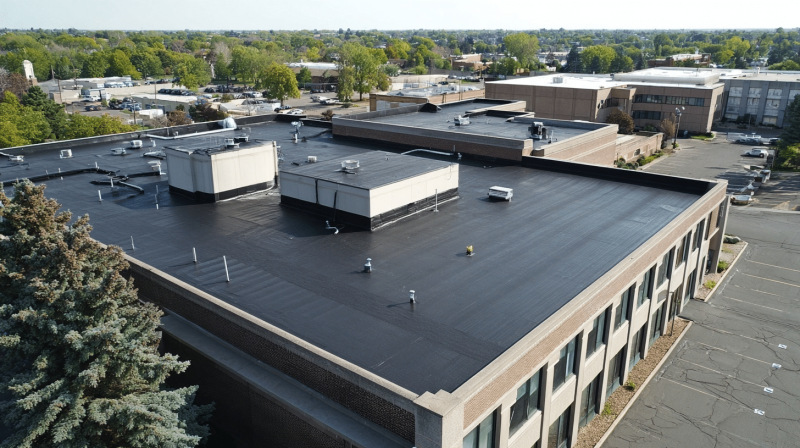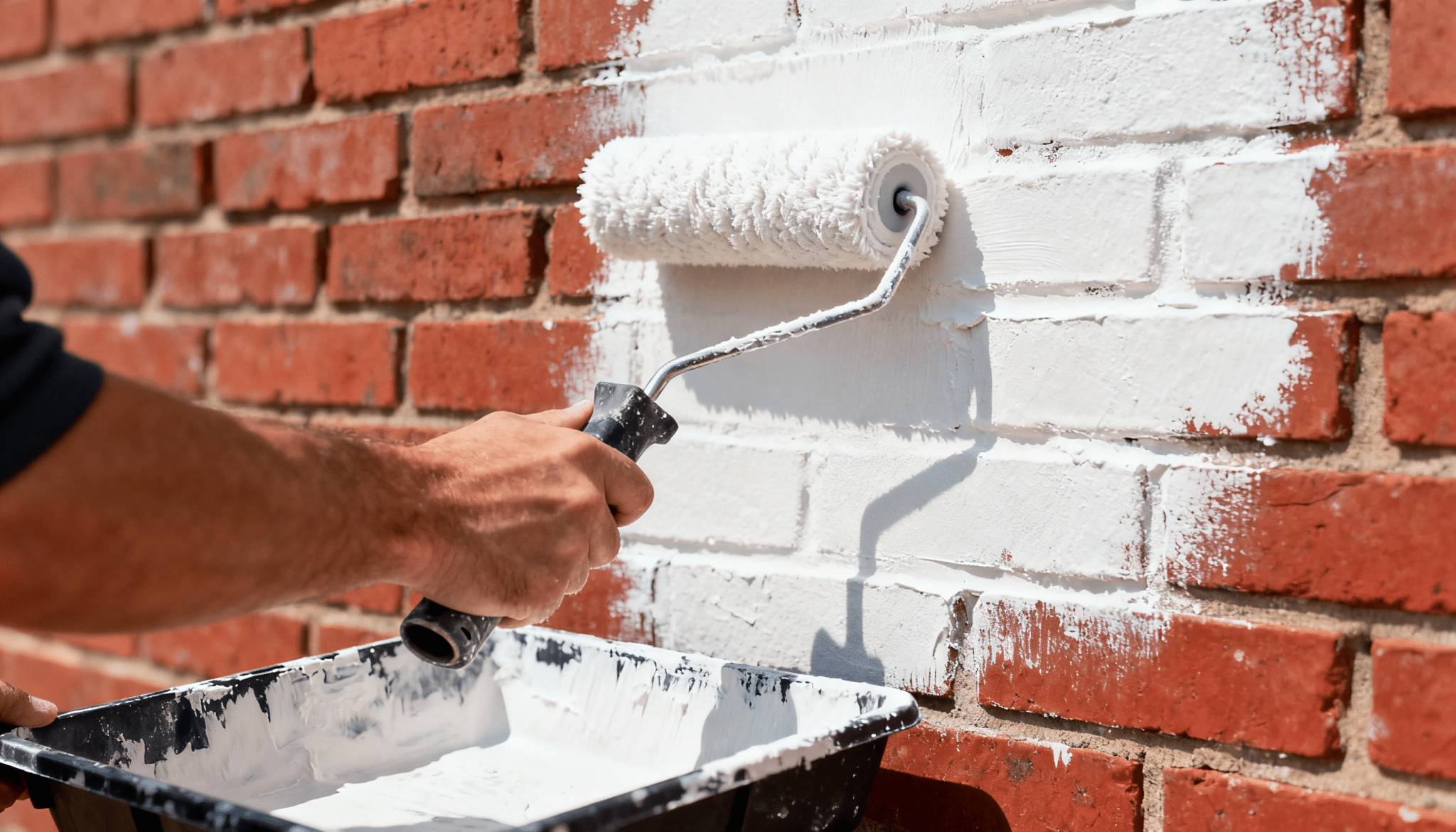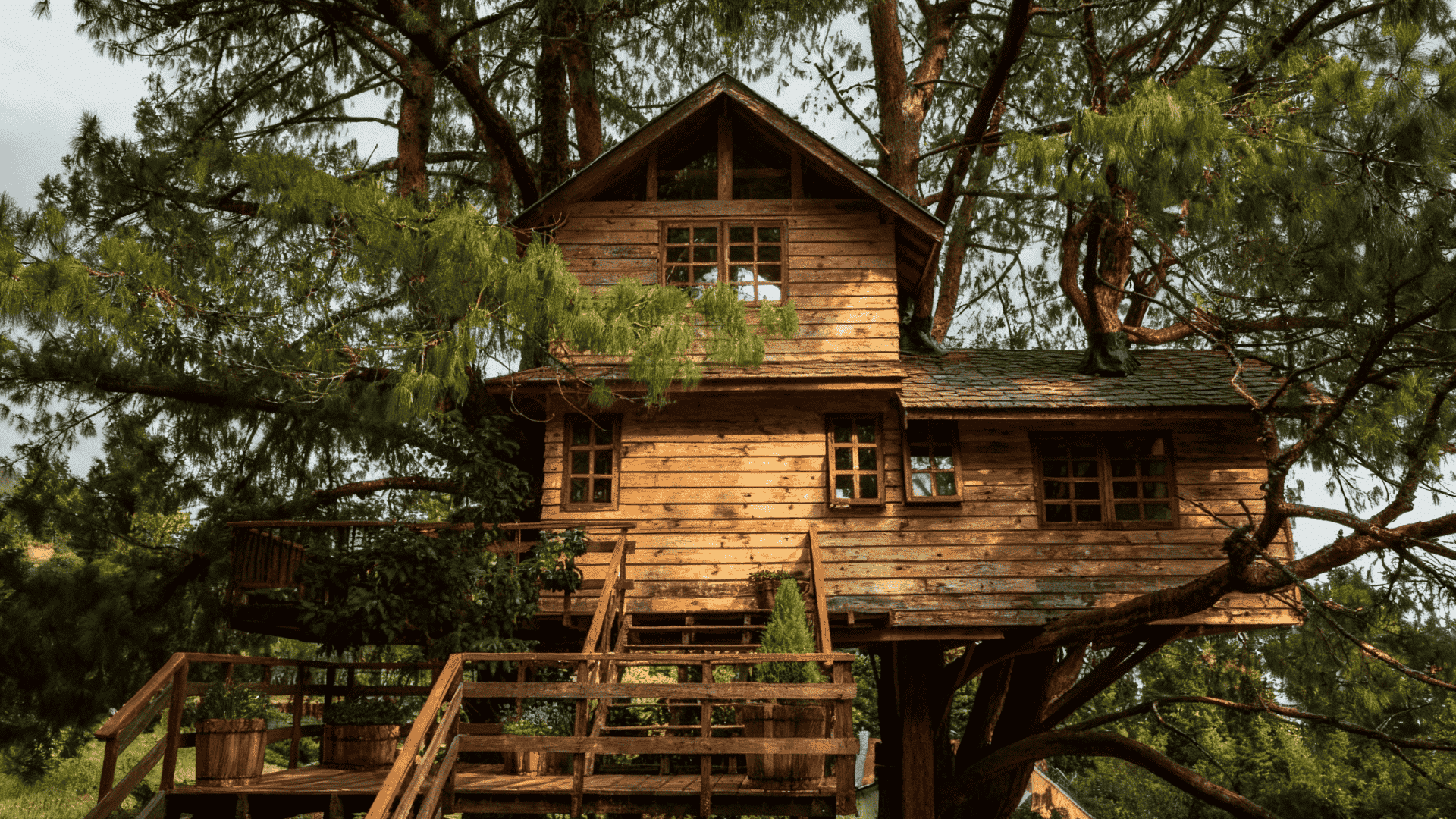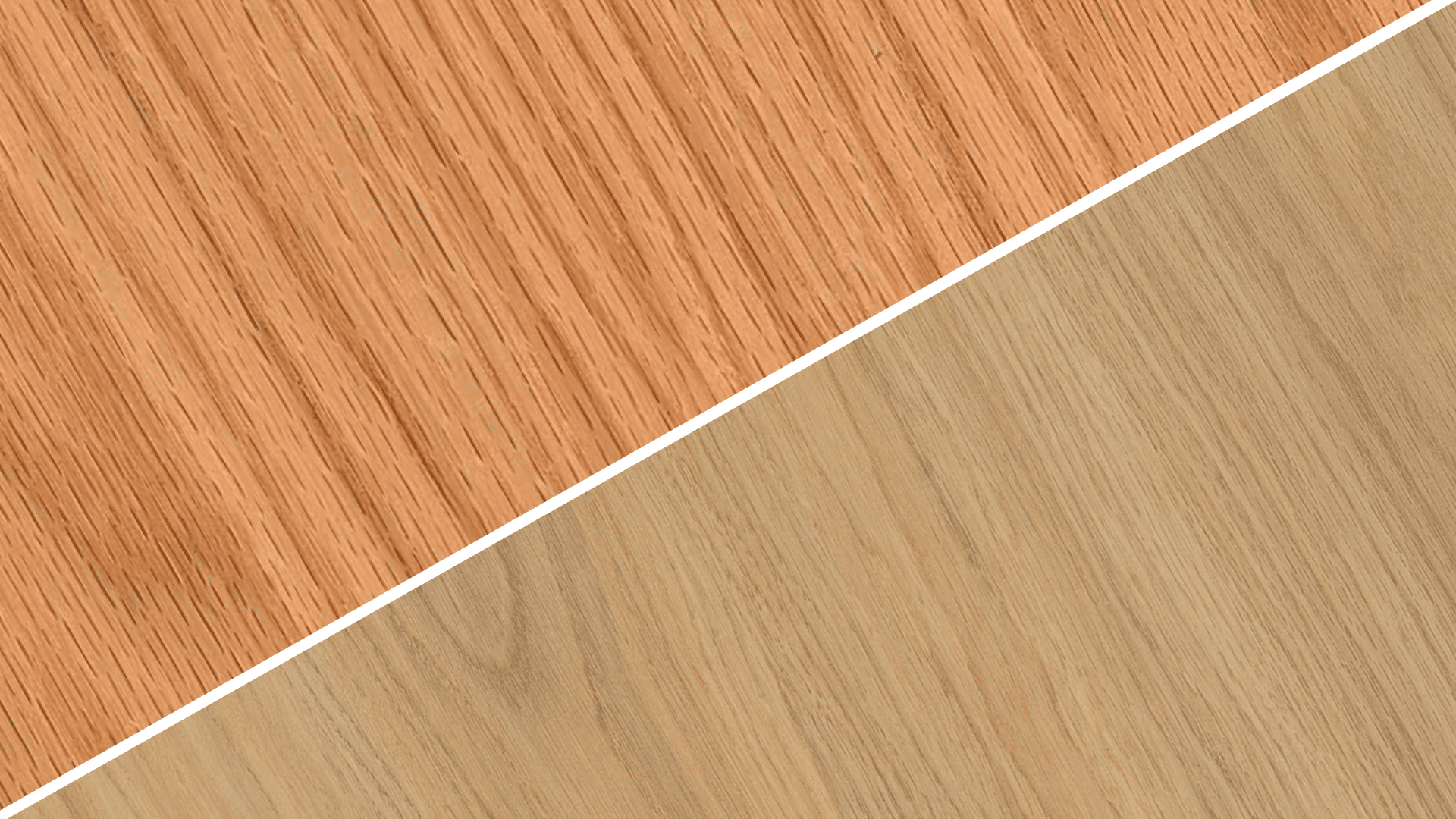Are you considering EPDM roofing? Hold up! Before you get all excited about that black rubber membrane, let me tell you something.
I’ve seen enough roofing disasters to know that EPDM isn’t always the hero it pretends to be.
Sure, it looks simple enough. Just roll it out, stick it down, and you’re done, right? Wrong! This rubber roof has some sneaky tricks up its sleeve that might leave you scratching your head.
You’ll want to be aware of these downsides before committing. Let’s discuss why EPDM might not be your ideal roofing solution.
What is EPDM Roofing?
EPDM stands for Ethylene Propylene Diene Monomer. Sounds fancy, right? It’s synthetic rubber that comes in big black sheets. Think of it as a giant rubber band stretched over your roof.
This material gets rolled out like a carpet and glued down with adhesive. The entire system is designed to create a waterproof barrier that prevents rain from entering. Simple concept, but execution? That’s where things get interesting.
Key features:
- Made from synthetic rubber compounds
- Usually comes in black color
- Available in different thicknesses
- Installed as large membrane sheets
- Requires special adhesives and seaming techniques
Why Do People Tend to Opt for EPDM Roofing
Before we get into the nitty-gritty problems, let’s see why folks fall for this rubber roof in the first place. The appeal is pretty obvious at first glance. EPDM seems like the easy button for roofing.
1. Lower Upfront Costs: EPDM costs less per square foot than premium roofing options. These initial savings attract budget-conscious homeowners who want decent protection without breaking the bank.
2. Quick Installation: Contractors can roll out EPDM much faster than other materials. This speed means lower labor costs and less disruption during installation.
3. Low-Maintenance Marketing: Sales reps push the “install it and forget it” story. They claim you won’t need regular maintenance, which sounds perfect for busy homeowners.
4. Works on Flat Roofs: EPDM performs well on roofs with minimal pitch where traditional shingles won’t work effectively. Many flat roof applications rely on membrane systems like this.
5. Longevity Claims: Marketing materials often promise EPDM lasts 20-30 years with proper installation, and investing seems worthwhile despite potential future problems.
Disadvantages of EPDM Roofing
These are real issues that people face with their EPDM roofs every single day.
Some problems show up within the first year, while others sneak up on you after a decade of seemingly trouble-free service.
1. Puncture Problems
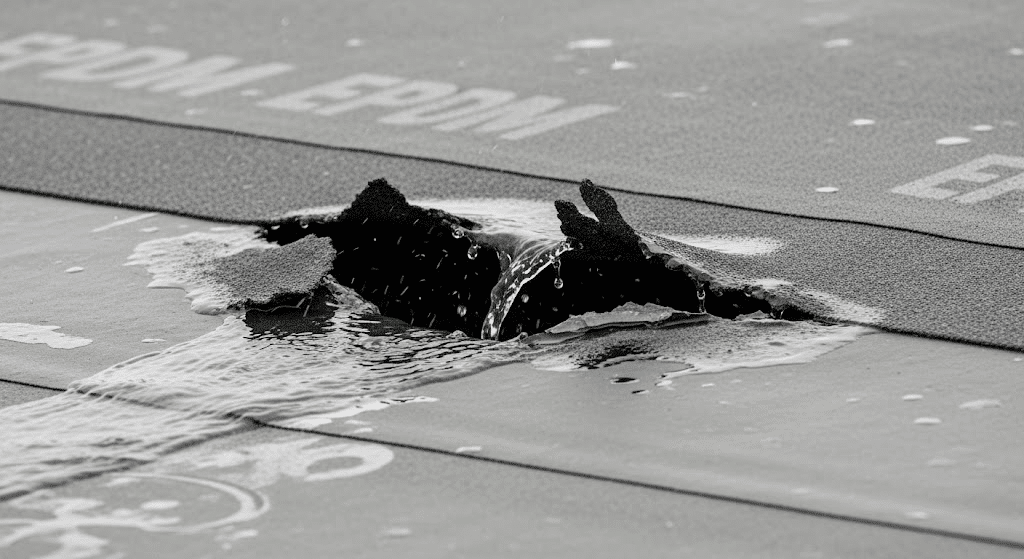
EPDM might be tough, but it’s not invincible. Sharp objects, falling branches, or even heavy foot traffic can create holes in the membrane.
Once punctured, water finds its way in faster than you can say “roof leak.” The problem gets worse because these punctures aren’t always obvious until damage has already occurred inside your building.
2. Seam Failures
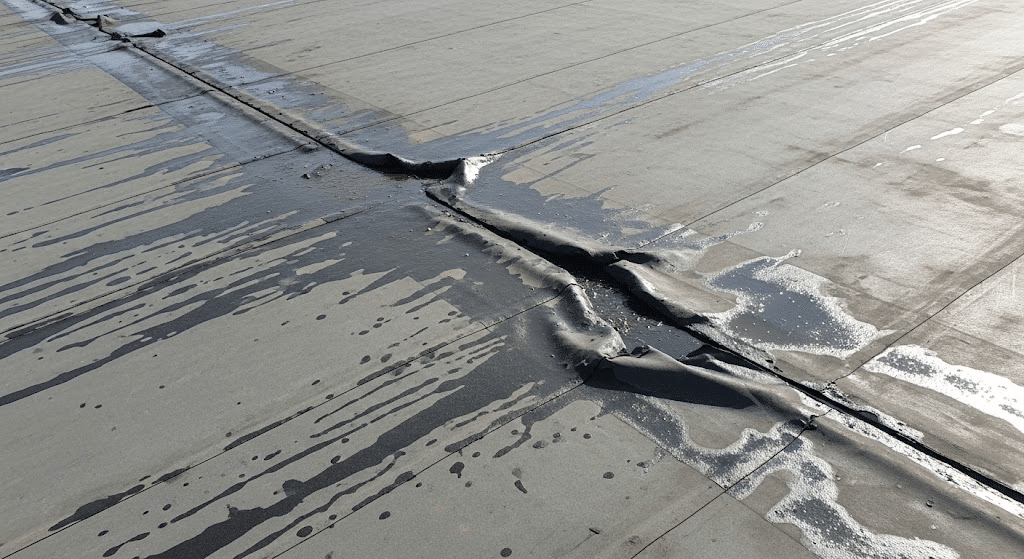
Those seams where rubber sheets meet? They’re weak spots waiting to happen. Over time, adhesives fail, edges lift, and water seeps through.
It’s like having a zipper that keeps coming undone. Weather extremes exacerbate this problem, causing the adhesive to lose its grip and creating entry points for moisture.
3. Shrinkage Issues
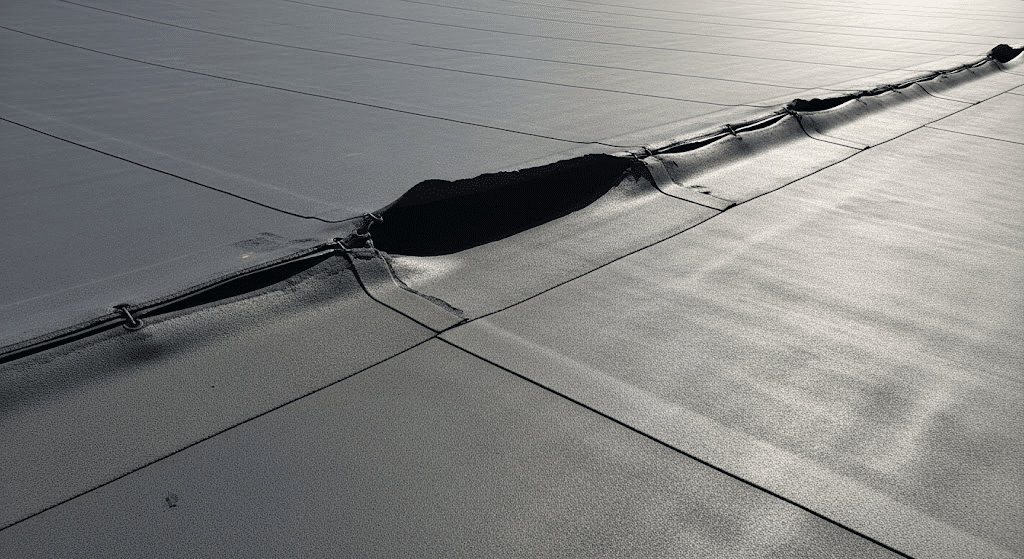
Rubber contracts and expands in response to temperature changes. This movement can pull seams apart or cause the membrane to shrink away from edges, creating gaps.
The constant expansion and contraction cycle puts stress on the entire roofing system, eventually leading to separation at critical connection points.
4. Color Limitations
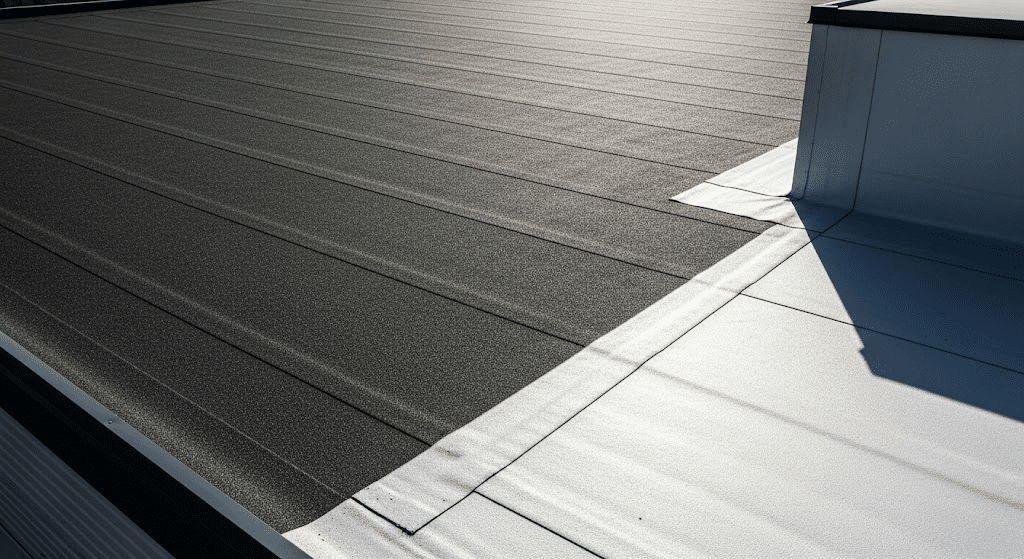
Black absorbs heat like nobody’s business. This means higher energy bills in summer and potential thermal stress on the roof structure.
White EPDM is available, but it costs more and has its own set of problems.
The dark surface can reach temperatures well above 160°F, making your cooling system work overtime and potentially damaging the roof deck underneath.
5. Installation Sensitivity
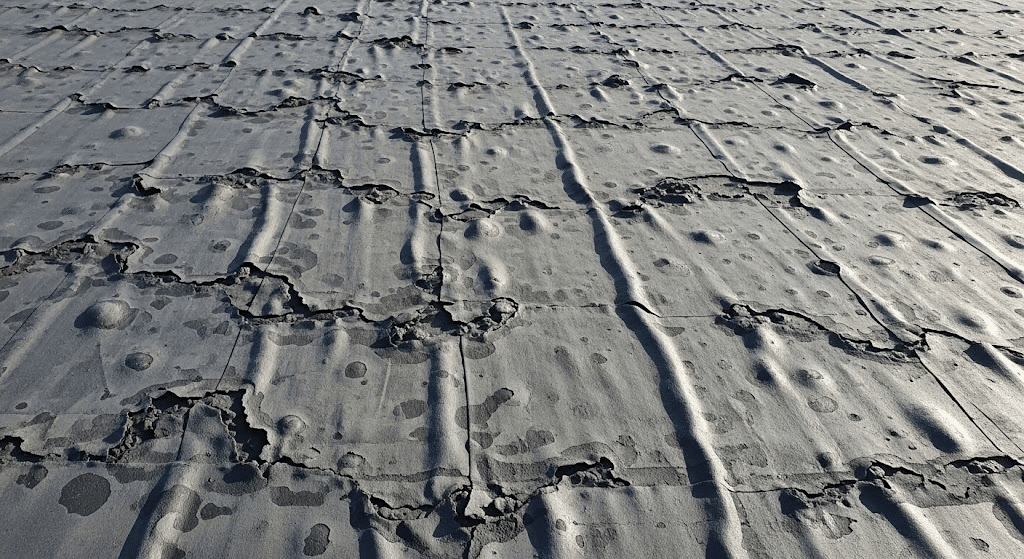
Getting EPDM right requires skilled workers. Poor installation leads to bubbles, wrinkles, and premature failure.
Unfortunately, not every contractor knows the tricks. The membrane needs to be perfectly flat and properly adhered, but inexperienced installers often rush the process or skip important preparation steps.
6. Chemical Vulnerability
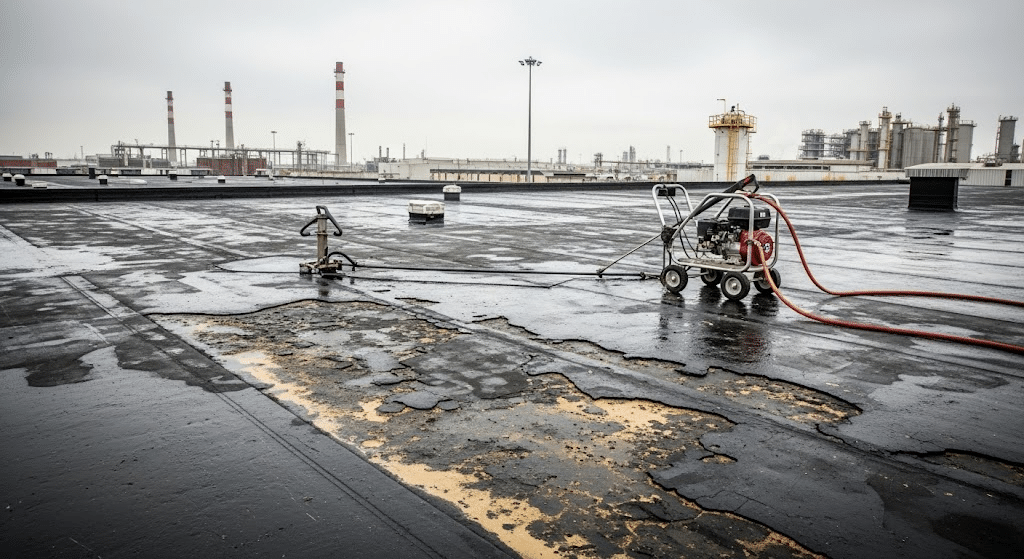
Certain chemicals, oils, and solvents can damage EPDM. If you live near industrial areas or have maintenance equipment on your roof, this becomes a real concern.
Even common substances like petroleum products can cause the rubber to swell, crack, or deteriorate faster than expected.
7. UV Degradation
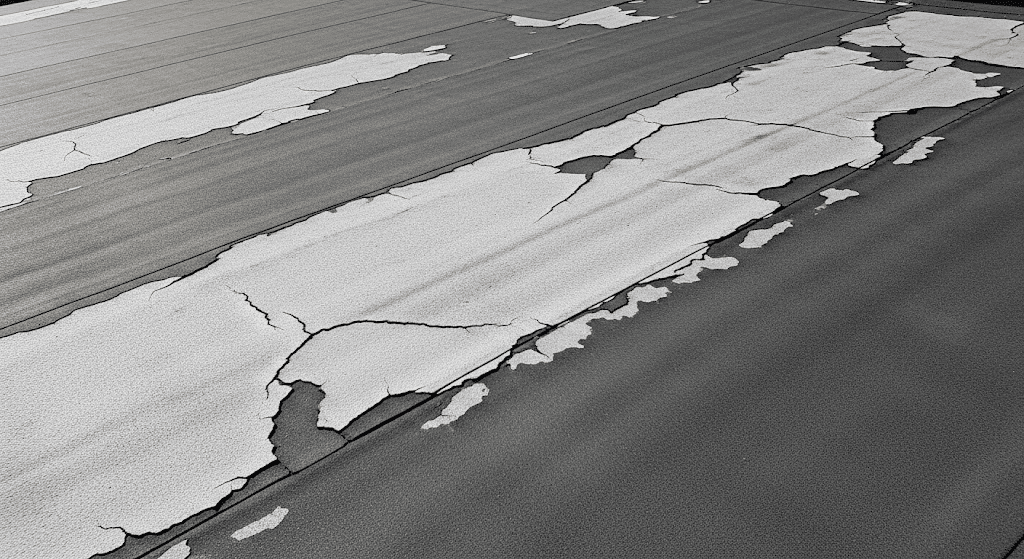
Despite being marketed as UV-resistant, EPDM still breaks down under constant sun exposure.
The surface becomes chalky and brittle over time. This weathering process reduces the membrane’s flexibility and makes it more prone to cracking, especially around seams and penetrations.
8. Ballast Requirements
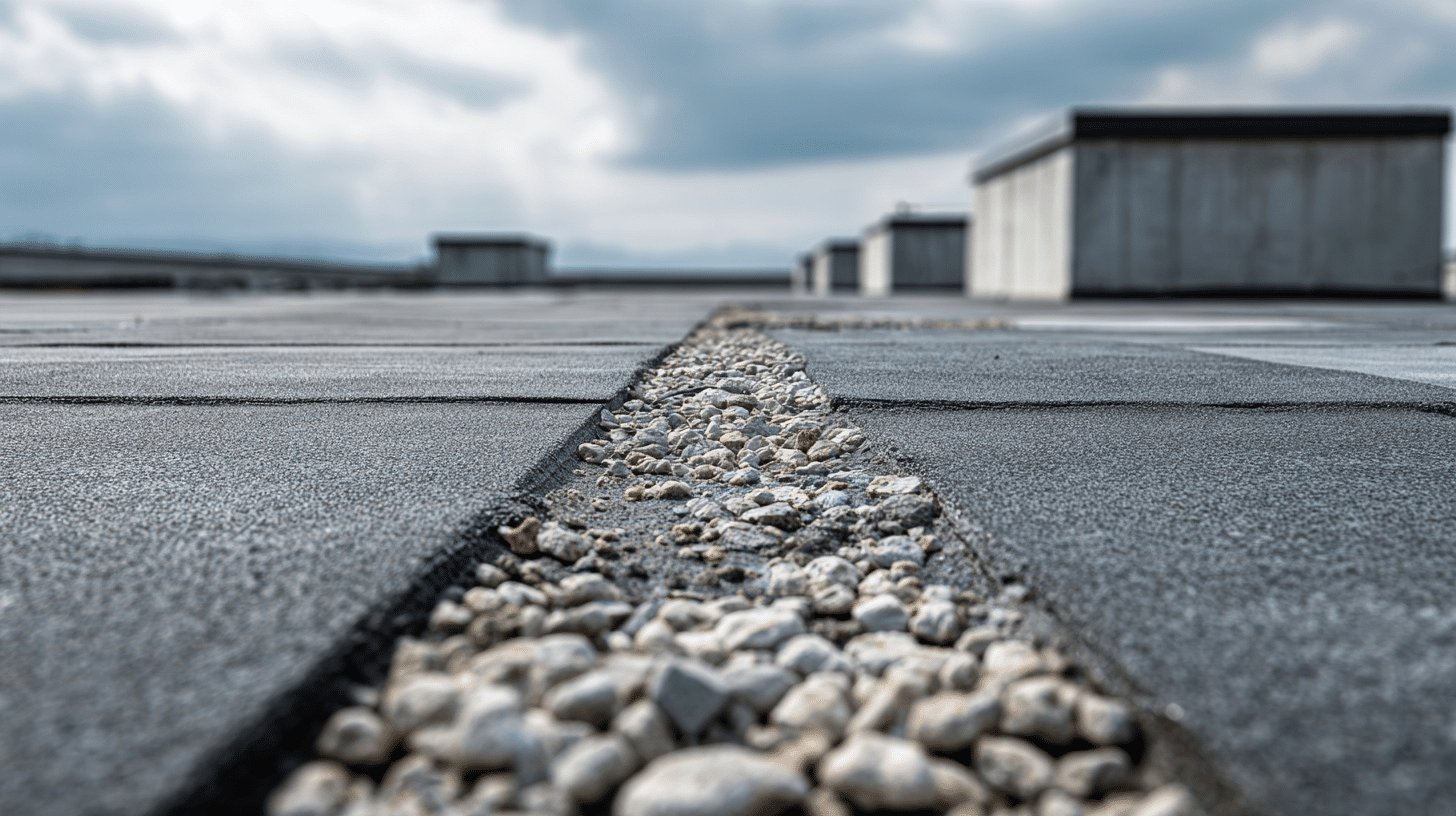
Many EPDM installations require rocks or pavers to secure the membrane in place. This adds weight to your roof structure and creates maintenance headaches. The ballast can shift during storms, creating uneven loading on your roof.
Additionally, it makes finding and fixing leaks significantly more challenging.
9. Repair Complexity
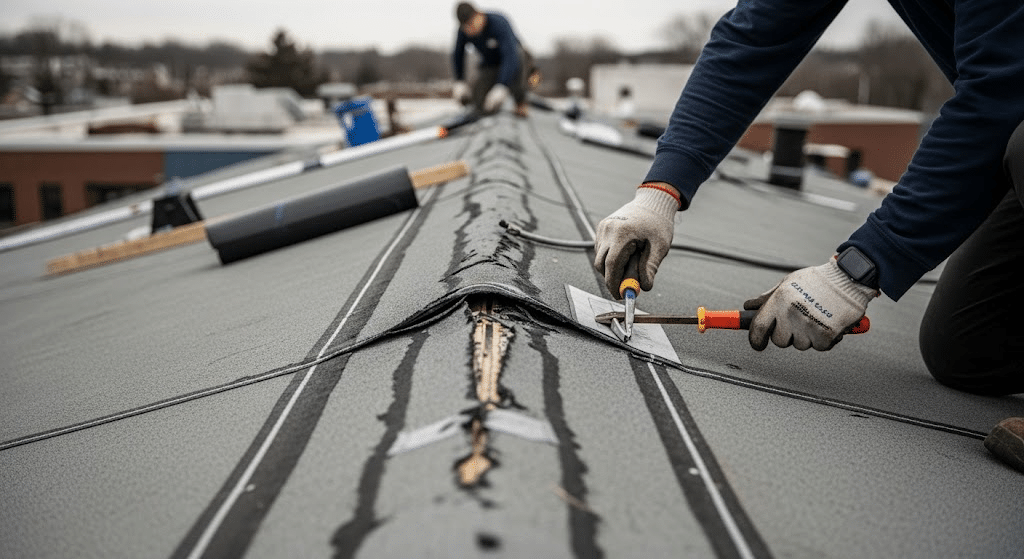
Fixing EPDM isn’t as simple as slapping on a patch. Proper repairs require cleaning, priming, and specific techniques.
Many quick fixes fail within months because the repair materials don’t bond properly with the aged rubber surface.
Finding the exact source of leaks can be challenging, too, since water can travel under the membrane before appearing inside.
Alternatives to EPDM Roofing
Ready to consider other options? Below is what else is available. Make the correct choice by evaluating the pros and cons of the available options and determining which one is best suited for you.
| Material | Pros | Cons | Best For |
|---|---|---|---|
| TPO (Thermoplastic Polyolefin) | Heat-reflective white surface, good puncture resistance | Newer technology, fewer long-term studies | Energy-conscious homeowners |
| Modified Bitumen | Proven track record, good in cold climates | Requires torch application, not eco-friendly | Traditional buildings |
| Built-Up Roofing (BUR) | Very durable, time-tested | Heavy, requires skilled installation | Industrial applications |
| Metal Roofing | Long-lasting, fire-resistant | Higher upfront cost, noise concerns | Homes with adequate structure |
| Spray Foam | Excellent insulation, forms to any shape | Requires professional application | Complex roof shapes |
| Green Roofing | Environmental benefits, natural insulation | High maintenance, weight concerns | Eco-friendly projects |
Essential Considerations Before Making Any Roofing Decisions
Before making any roofing decisions, consider these factors. These will save both your money and your mental peace in the long run.
- Climate Matters: EPDM might work fine in moderate climates, but struggles in extreme heat or cold. Consider your area’s temperature swings, rainfall patterns, and UV exposure.
- Budget Reality Check: Don’t just look at initial costs. Factor in costs like long-term maintenance expenses, energy costs, potential repair needs, and replacement timeline
- Professional Installation: Regardless of the material you choose, skilled installation is crucial. A poorly installed premium roof performs worse than a well-installed basic one. Get multiple quotes and check references.
- Building Structure: Make sure your roof can withstand the weight and requirements of your chosen material. Some options require structural upgrades, which add to the overall costs.
Conclusion
EPDM isn’t evil, but it’s not the miracle solution some make it out to be. Like any roofing material, it has its advantages and disadvantages.
The disadvantages outlined here aren’t meant to scare you away entirely. They’re meant to help you make an informed decision.
Some homeowners live happily with EPDM for decades, while others regret their choice within a few years.
Do your homework, understand the risks, and make an informed decision based on your specific situation. Your roof is too important to leave to chance, and now you know what questions to ask.


